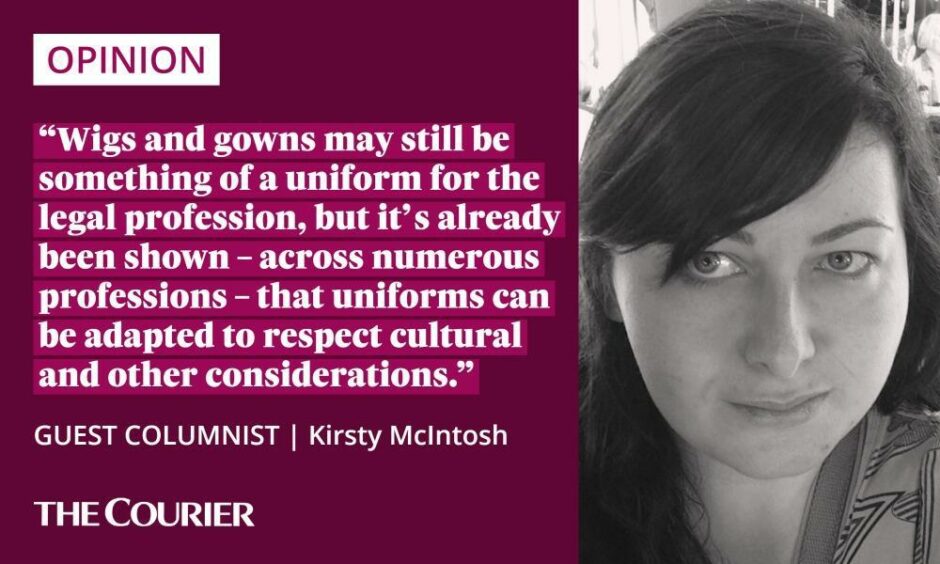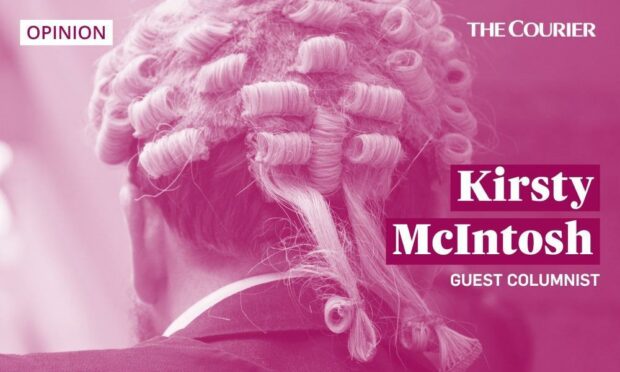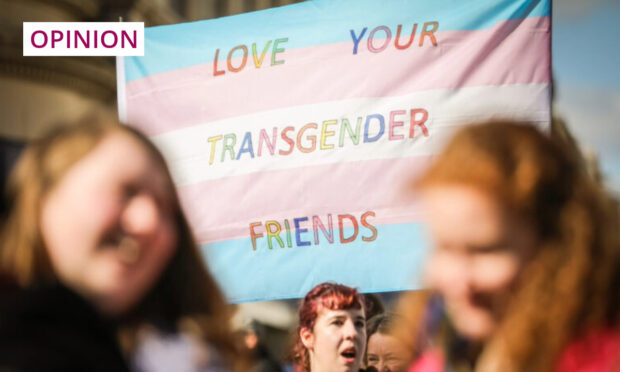“All the world’s a stage, and all the men and women merely players”, wrote Shakespeare.
And nowhere in public life is this sense of theatre more apparent than the criminal court room.
An angry accused – his shouting in the cells audible in the court room above – almost always becomes as meek as a lamb when led into the dock.
Because he or she understands their role in the drama.
And like any good theatre production the costumes are essential.

In this case, it’s the gowns and elaborately curled horsehair court wigs that are used to convey the knowledge passed down through centuries of legal practice.
Dating back to the 1600s, they also indicate position within the highly stratified and hierarchical court system.
But these symbols have come under increasing scrutiny, most recently when black barrister Leslie Thomas QC called for wigs to be banned.
The leading English lawyer called them “culturally insensitive”, after a fellow black barrister was told he could be held in contempt of court if he declined to wear a court wig over his afro.
Asked the Bar Council what could happen if, as a Black Barrister with an Afro, I declined to wear my wig.
The answer included: "contempt of court", "wasted costs" and various potential breaches of Code of Conduct.
"Unless the insistence was discriminatory"#HairDiscrimination
— Michael Etienne (@Metienne12) February 9, 2022
The story prompted intense debate among the legal profession both north and south of the border.
‘Laughable as a disguise’
Some feel the wig is earned, that it conveys authority.
Other supporters say it helps give advocates more anonymity, making them less recognisable without their formal court attire.
The Dean of the Faulty of Advocates Roddy Dunlop QC has spoken of it being part of the “brand”.
For me, the “brand” is certainly part of it. Not all of it, and not an essential part of it, but definitely part of it. The popularity of wigs is strong amongst most Scots practitioners, esp the juniors (probably because they’ve just had to spend £££ on them so want to use them!)
— Roddy Dunlop QC (@RoddyQC) February 12, 2022
Even as recently as 2019, when court wigs and gowns were ditched in certain Court of Session hearings, a survey conducted by Scottish Legal News, found more than three quarters of lawyers were in favour of retaining ceremonial attire.
But what of the other 22%?
Some say the idea that they prevent recognition is as outdated as the wig.
It’s 2022 after all, and most legal professionals have their photographs on company websites.
Few exceptions made for court wigs rule
Wigs and gowns may still be something of a uniform for the legal profession. But it’s already been shown – across numerous professions – that uniforms can be adapted to respect cultural and other considerations.
In court this morning, a judge, 3 counsel, solicitors and court staff. Some of my more recent correspondents will be relieved & possibly surprised to know that the building didn't collapse around my ears just b/c I didn't wear my wig. pic.twitter.com/9NPWhuVvPT
— Michael Etienne (@Metienne12) February 17, 2022
However, in the criminal courts one of the only times wig-wearers are permitted to remove them is in cases involving child witnesses.
Currently the Faculty of Advocates makes no exceptions for those who would wish to wear a hijab or a turban, let alone an afro.
So why has the Scottish legal system failed to keep up in terms of reflecting a modern multi-cultural society?
As Dame Judi Dench and Sir Ian McKellan proved in Macbeth in 1979, a theatre production hangs much less on the set pieces and costumes than on the performance given.
It can even win wide-spread acclaim.
If wigs were to be optional, rather than mandatory, many would undoubtedly choose to continue wearing them .
But justice would not collapse if they were occasionally forgone.
Kirsty McIntosh is a reporter on The Courier’s crime and courts team.










